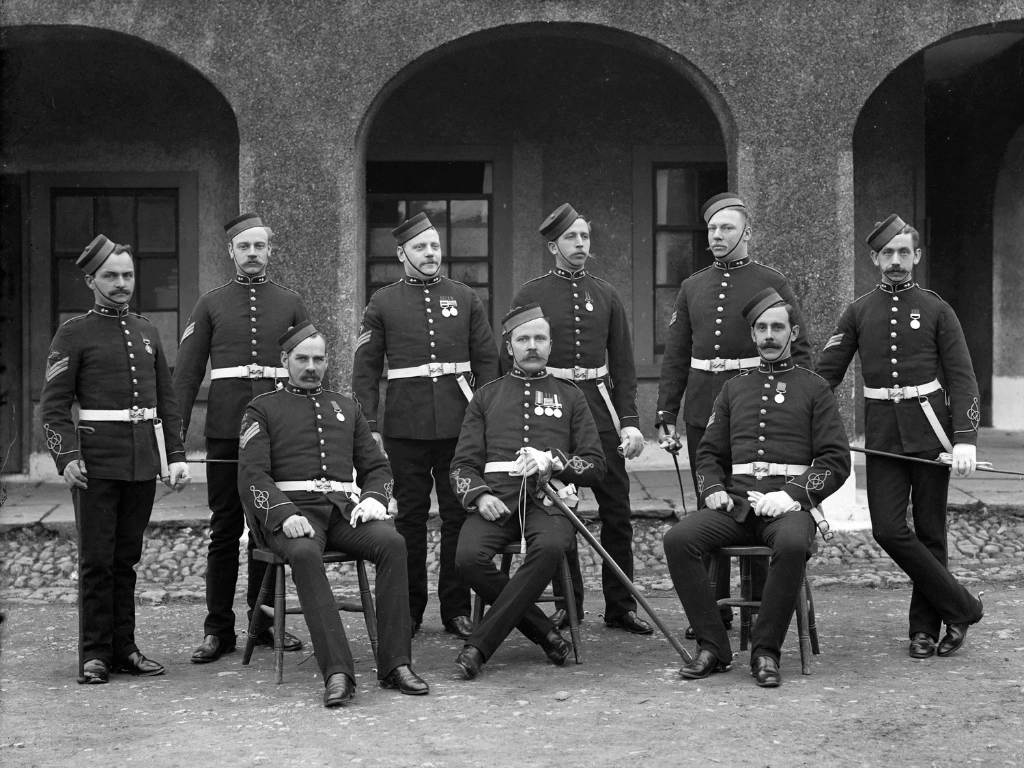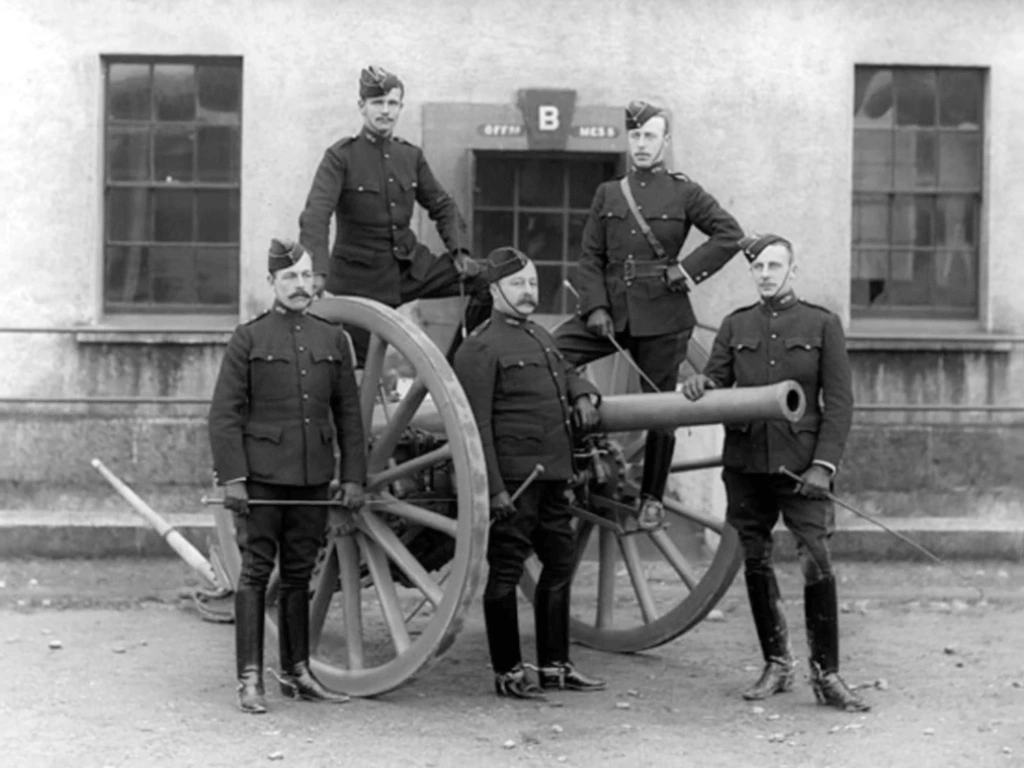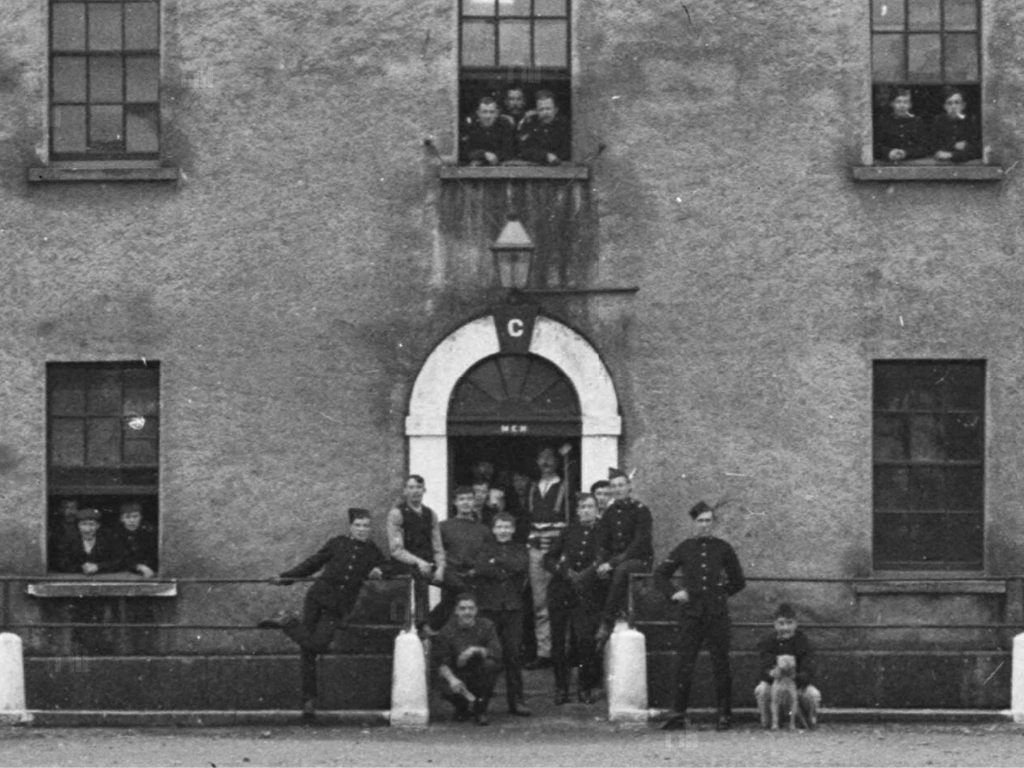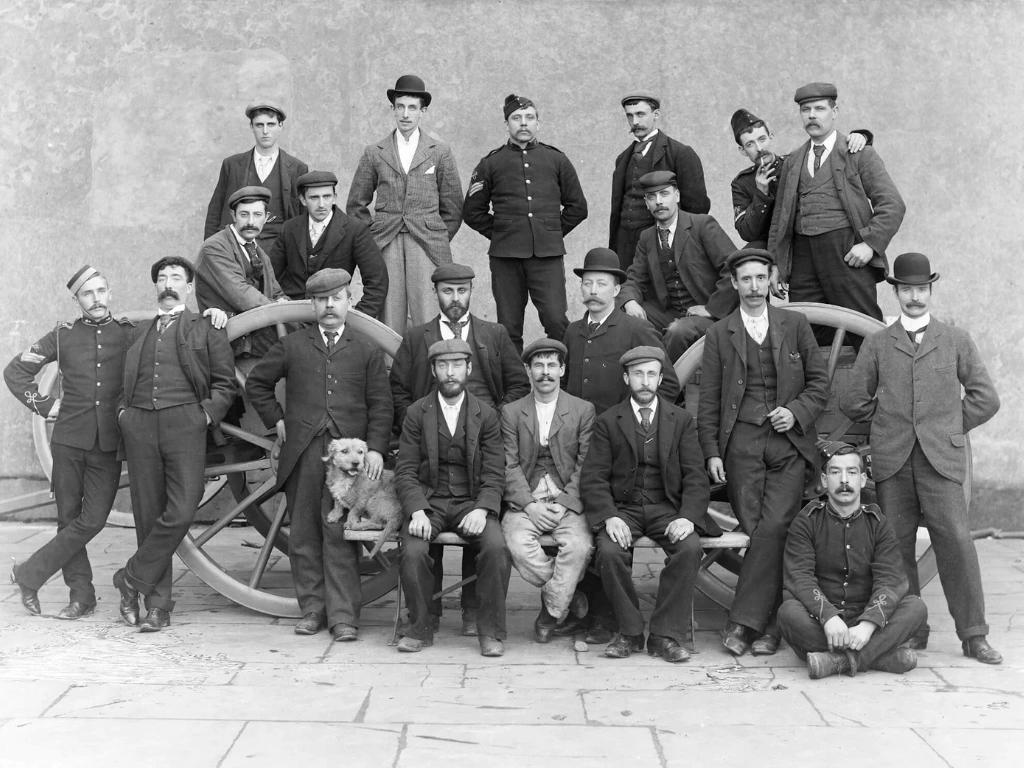History
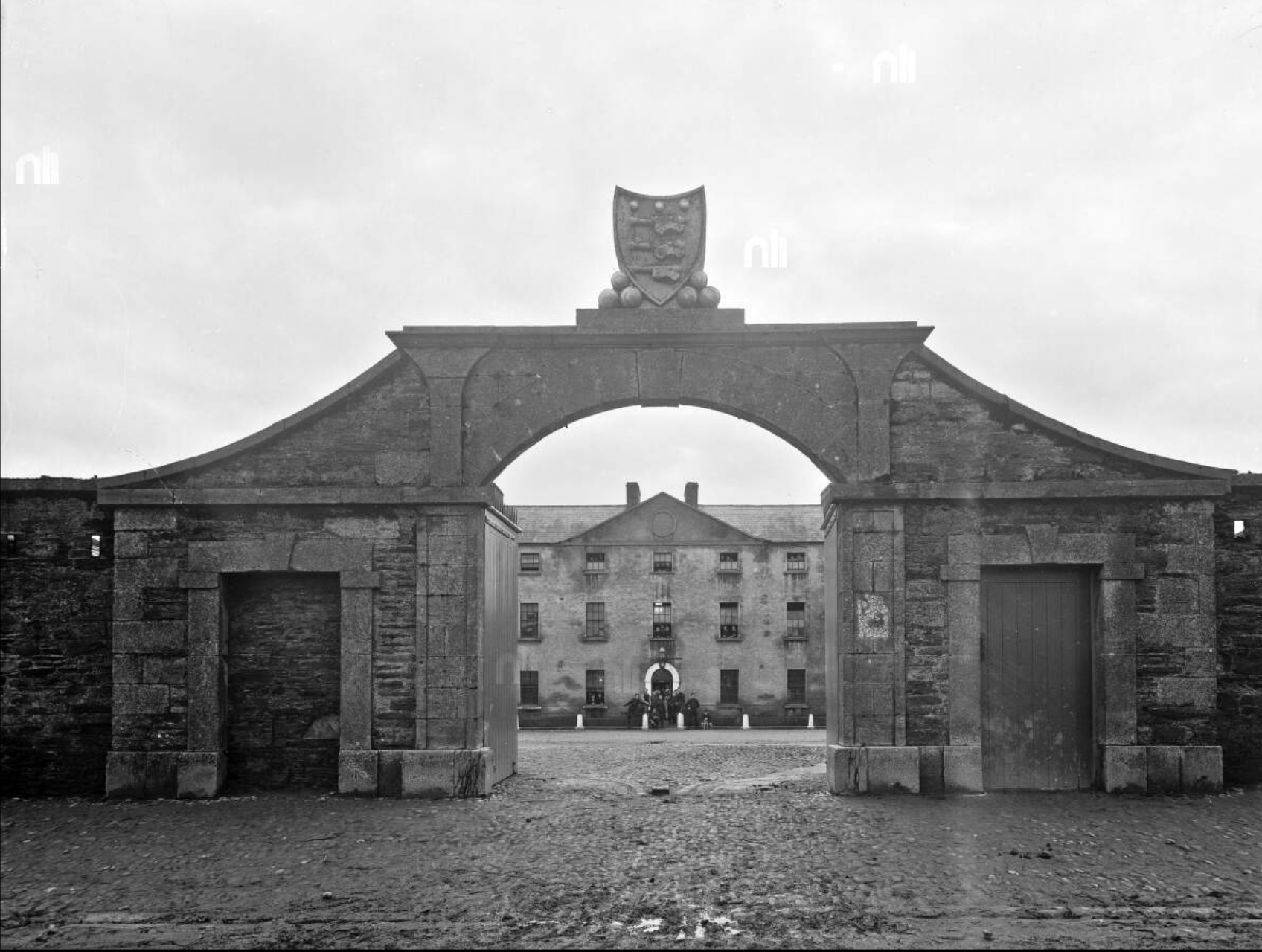
As you stroll through the garden, with its colorful foliage and city views unfurling below, you may find it hard to picture this tranquil site as a military hub.
Just a few generations ago, the residential pocket that's now St. Carthage's Avenue was home to the Artillery Barracks. Established in 1805, this site was crucial in the defence of both Ireland and Britain during that time of great unease following the French Revolution.
Scroll on to travel back in time through the area's history from ancient times right through today.

Ancient and medieval Ireland: 'A country of saints and scholars'
In ancient times, the area surrounding Barrack's Street was home to a faha, or "common green".
According to local historians, the faha may have belonged to or indicated the presence of a wealthy family in the area.
St. Carthage's Avenue wasn't established until 1938, but the area takes its name from the 7th-century Saint Carthage the Younger (Mo Chutu mac Fínaill).
Also called Saint Mochuda, he was born in Kerry and spent most of his monastic life in County Offaly. In 635, Saint Carthage established a monastery on Moccody’s Hill in Lismore before living out the rest of his life as a hermit. His feast day is 14 May.
In medieval times, the portion of Barrack's Street called Longcourse was used for archery training. This straight stretch from the corner of Mayor's Walk to the corner of St. Carthage's Avenue was ideal for this purpose, as archers needed a lot of space and clearance to successfully fire their heavy bows.
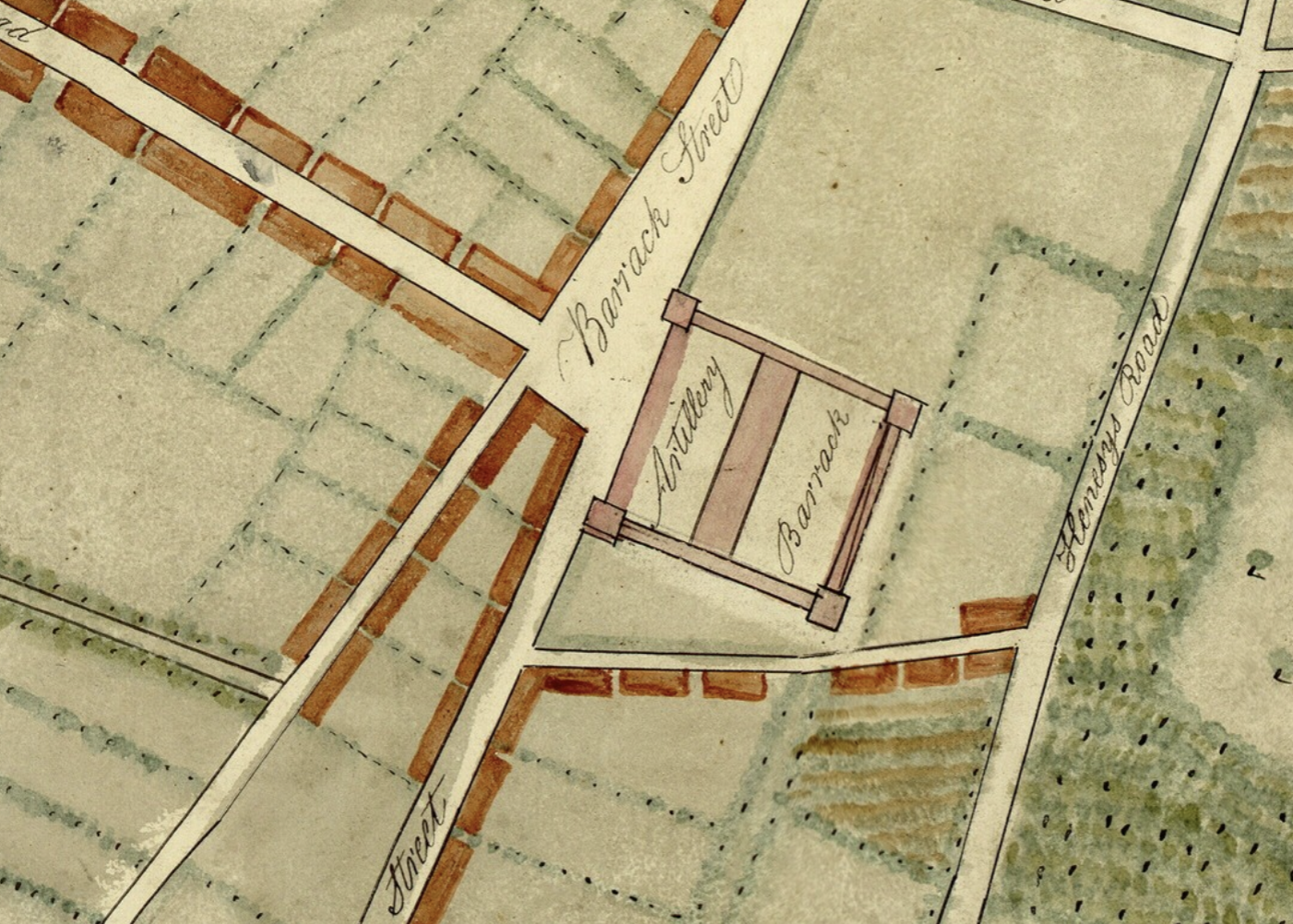
Early 1800s: Waterford's defence plan against Napoleon Bonaparte
Anticipating an invasion, the British Army established several barracks throughout Ireland during the early 1800s. Both the Artillery Barracks and the Infantry Barracks (located across the road, in the complex that now houses Waterford Youth Arts) were part of these new builds.
This 1830s map shows the Artillery Barracks' location overlooking Hennessey's Road. The garden is located roughly along the bottom edge of the Artillery Barracks in this map.
The barracks provided a huge economic benefit to Waterford. Local farmers, butchers, and merchants provided much of the food, supplies, and sundries the barracks needed to operate.
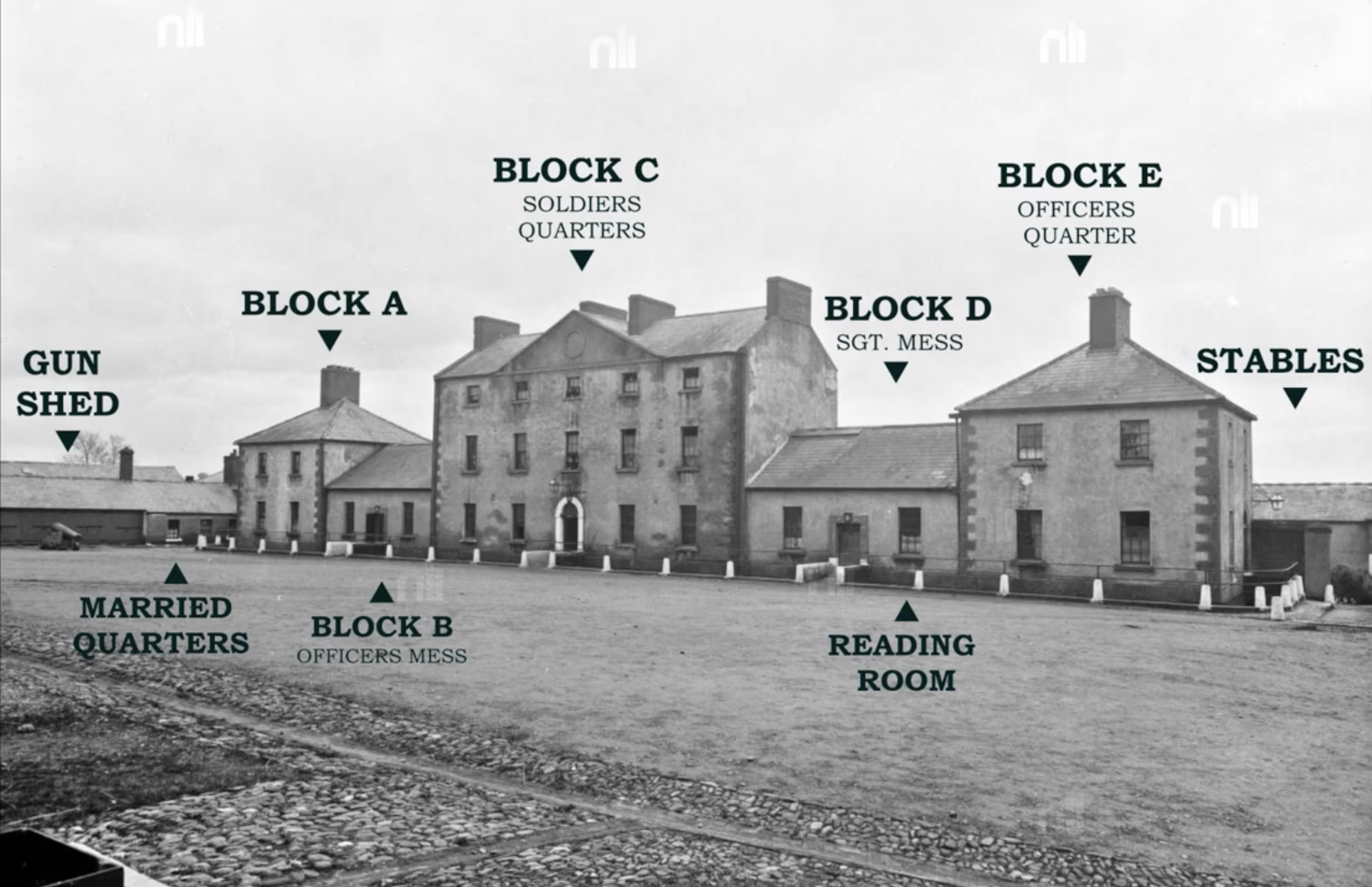
1913: A tour of the Artillery Barracks
The Artillery Barracks comprised of 9 main buildings and structures (listed in order from left to right):
- Gun Shed
- Married Quarters
- Block A: Accommodation
- Block B: Officer's Mess
- Block C: Soldiers' Quarters
- Block D: Sergeants' Mess
- Reading Room
- Block E: Officers' Quarters
- Stables
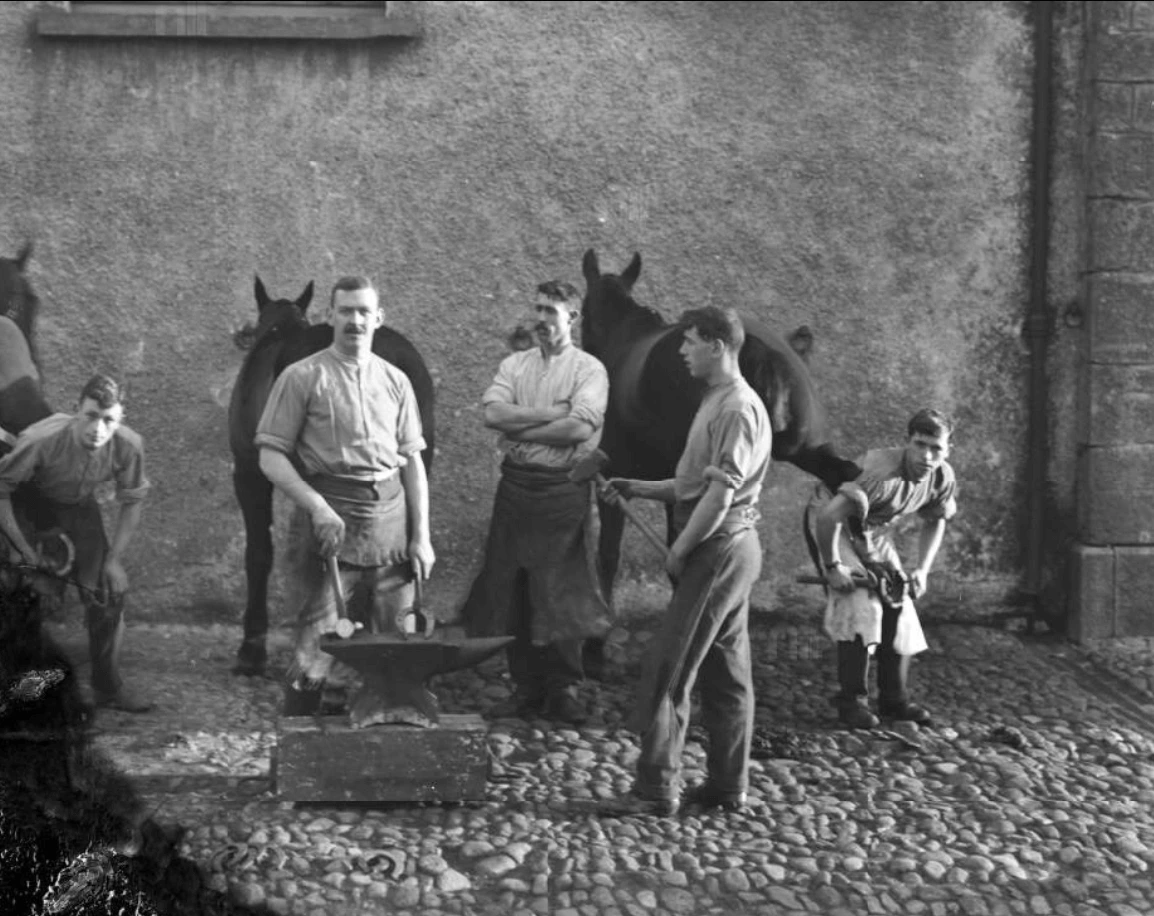
Meet the soldiers
As of 1913, the Artillery Barracks housed 56 people and 66 horses. Through photos in the Poole Collection, commissioned by a Sergeant Murray and archived by the National Library of Ireland, we've learned some interesting things about them:
- The curtains in the married quarters were cleaner than those in the soldiers' quarters, indicating the wives were quite house-proud.
- A medium-sized golden dog, possibly a terrier, featured in several photos may have been resident at the barracks or even belonged to one of the soldiers. This photogenic pup seems to love the attention!
- Civilians were invited for some photos. We're not sure who they were, or who invited them — they may have been local merchants who served the barracks, or friends and family of the soldiers. One thing we do know? They all look dapper in their suits and mustaches!
All together now, lads!
(Tap each image to enlarge.)
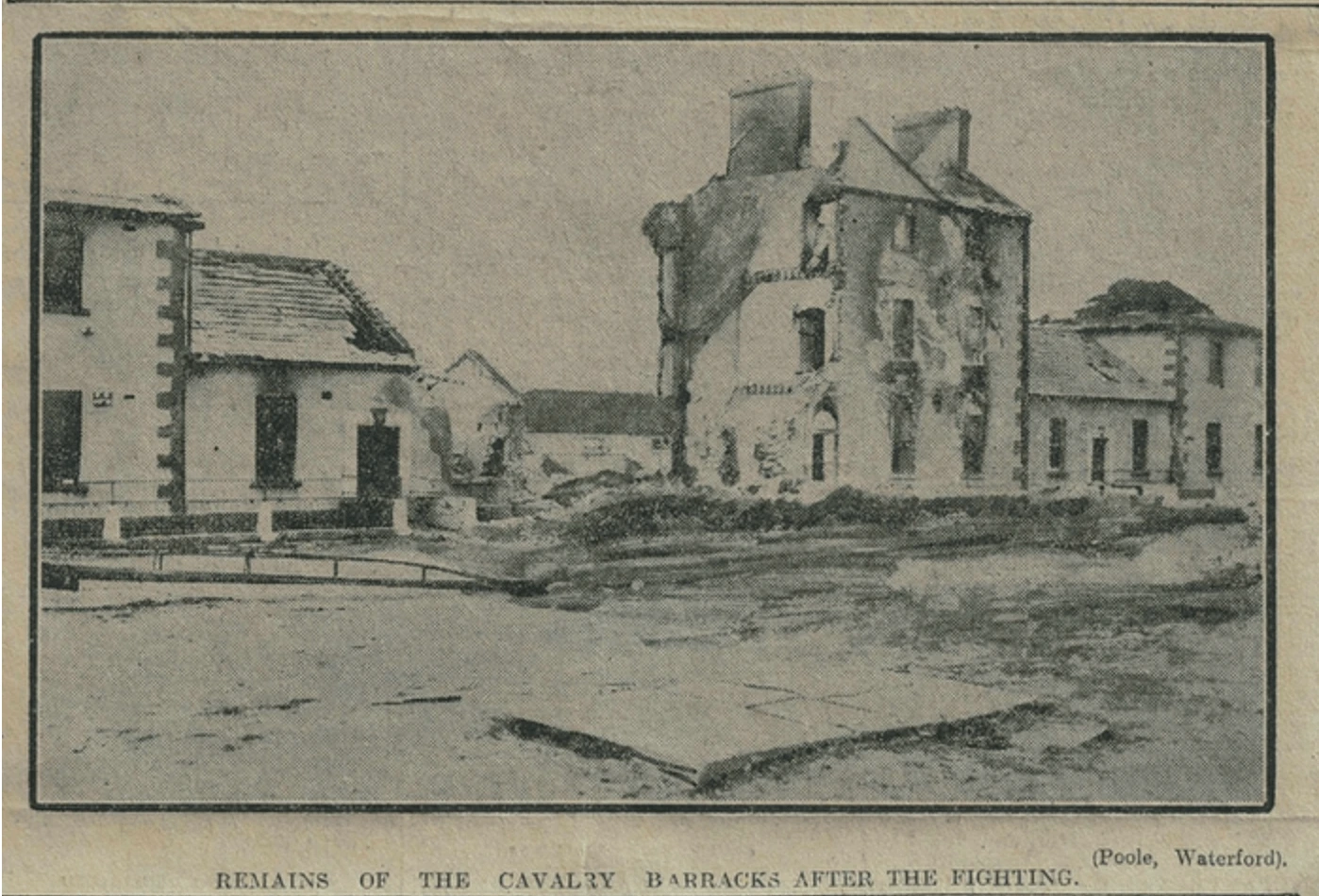
1922: Artillery Barracks destroyed 4 months after British soldiers relinquish control to the IRA
On the morning of 9 March 1922, the last of the British Army forces were evacuated from the Artillery Barracks. The Infantry Barracks across the road were evacuated later on, at 4 PM.
Tragically, just four months later, the Artillery Barracks were destroyed in the Siege of Waterford during the Irish Civil War. This photo — part of the Poole Collection and published in the 29 July 22 issue of the Cork Examiner — shows the extent of the carnage.

1938: St. Carthage's Avenue built
Did you know? The homes St. Carthage's Avenue were some of the first in the country to have indoor bathrooms!
An advertisement published in the 03 March 1939 issue of Waterford News and Star noted the 'rents in some cases will be rather high' and 'the government shall not grant any subsidy' for these fancy, new-fangled homes.
Applicants were cautioned against applying unless they could truly afford it: 'In the case of the higher-rented houses, it will be absolute necessary for applicants to satisfy that they are capable of paying those rents. They form a fairly heavy burden, and it would be unwise for anyone with small means to try for a house of that type.'
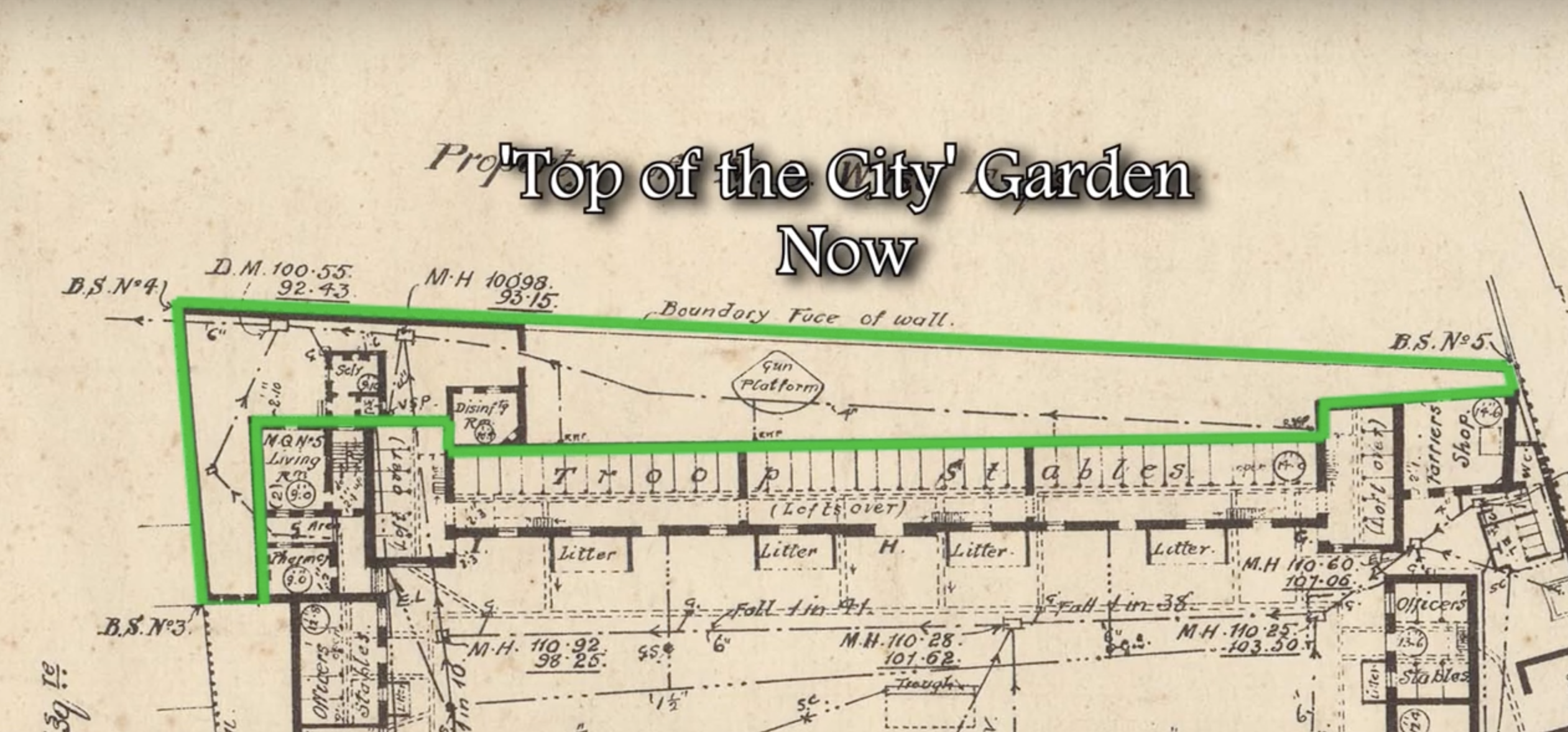
1939-2020: The old Gun Platform lies abandoned
For decades, the Gun Platform area of the barracks, where the garden is located today, lay unused.
Described as "a wasteland" in the Munster Express, the space was so overgrown and full of debris that "you couldn't actually enter," remarked Justyna Traore in the interview.

2020: A new space blooms during the pandemic
Top of the City Garden's history begins with one email from Justyna Traore (pictured) to Waterford City and County Council.
This was no elevator pitch — Justyna included a map and thorough outline of her vision. Mary Quigley responded the next day, and the work began.
Just one year later, thanks to the hard work of dozens of volunteers from around the community, Top of the City Garden opened to the public.
2025 and beyond: Growing together
Thanks to the continuous support of our members, community, sponsors, and partners, Top of the City Garden continues to grow and flourish.
Since 2021, our team and partners have made several improvements to the garden, including upgraded beds and compost bins, new timber structures with green roofs, a stone pizza oven, and more.
Although our team are looking forward to a restful 2026 to enjoy the (literal and figurative!) fruits of our labor, there's always something to tend here.
Historical photos courtesy of the National Library of Ireland. Barracks plan courtesy of Military Archives.
